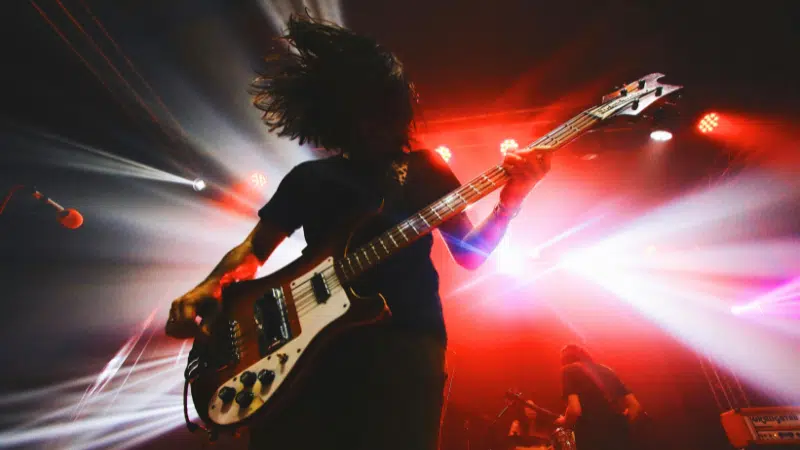Just like you’d need a resume for any other job, an EPK serves as a kind of music industry resume for musicians. Properly known as an Electronic Press Kit, this is an essential tool for anyone looking to not only get booked, but to be taken seriously as an artist. If you still don’t have one, what’re you waiting for!? Here’s everything you should absolutely have in it…
Why Every Artist Needs a Professional EPK
As a musician, your bio serves as a powerful tool to captivate and engage your audience. It provides an opportunity to share your story, express your unique voice and create an emotional bond. Not only that, a well-crafted bio showcases your professionalism to integral music biz people like talent scouts, journalists, press/media, and event organizers.
It helps these people gauge your level of experience, achievements and musical style in order to make informed decisions about whether or not they want to do things like book you for shows or even just collaborate. In other words… your bio, or lack thereof, could very well be the make or break factor for whether or not you get offered major career opportunities. Check out, “Why Having a Great Artist Bio is Important & How To Write One” to learn everything you need to know.
Include High-Quality Professional Photos
As we’ve all heard a hundred times before, first impressions are everything. Having professional quality photos of you or your band could also be what makes or breaks your chance of being booked at that amazing venue or signing a deal with that perfect indie label. Don’t limit your chances of getting that next amazing opportunity by having no photos. Among these photos, include both portrait and action shots if possible.
Showcase Your Best Music Tracks
This one’s a given, but make sure to feature your best tracks or singles, preferably in both streaming and downloadable formats. Include links to your music on platforms like Spotify, SoundCloud or Bandcamp, and offer high-quality MP3 downloads or WAV files for industry professionals who may want to review your music offline. Choose a selection of your best tracks that represent your style and versatility as an artist. Include both released singles and perhaps unreleased tracks if you’re looking to build anticipation for upcoming releases. Aim for a balanced mix of different moods and tempos to showcase your range if you can.
Add Music Videos and Live Performance Clips
When it comes to videos, I mean more than just music videos. You should also include any live performances or visual content that properly represents your artistry. You can do this by embedding or linking to videos from platforms like YouTube or Vimeo.
Highlight Press Coverage and Releases
Next, it’s always a good idea to include positive reviews, testimonials, or quotes from reputable sources, bloggers, or industry professionals praising your music or performances. If you don’t have any yet, don’t worry! You can always add these as you get them. Same thing with any press releases about upcoming releases, tours, or significant achievements, all of this should definitely make an appearance here.
List Your Touring and Performance History
If you’ve got ’em, make sure to list any past AND upcoming tour dates, festival appearances, and any other notable performances you’ve done. Including upcoming details of any scheduled performances to come is a good way to demonstrate your ongoing activity. You want whoever is considering you for an opportunity to know you have experience performing, but that you’re also a credible artist who will be reliable when the time comes.
Include Active Social Media Links
When it comes to social media, make sure to only include the socials where you’re active. However, you SHOULD be active on Facebook, Twitter, Instagram, YouTube, SoundCloud… at the very minimum. These days, you should also be able to throw TikTok in there… but it’s not always expected.
By including links to these social media platforms, you provide industry professionals with easy access to your online presence, allowing them the chance to explore your content, engage with your fan base, and get a sense of your social media activity and reach as an artist.
——
🍬 Check out these other goodies…
Alternative Ways To Fund Your Music Career in the DIY Age
What To Do After Making Your Music Available Online
13 Ways Your Music Can Make You More Money
——
Showcase Your Notable Achievements
In your EPK, it’s crucial to highlight any successes you’re proud of to show how hard you’ve been working. Not only that, it shows that other people recognize this hard work too. Some examples of include (but aren’t limited to) things like:
- Any charting success or streaming milestones.
- Industry awards, songwriting competitions, or local music awards.
- Positive reviews or features from reputable music publications, blogs, or websites. (include quotes!)
- Radio airplay.
- Collaborations.
- Sync licensing features.
… and so much more! Anything you’re particularly proud of, throw it in.
Include Your Technical Rider
If you play a ton of live shows and tour a good amount, you may need to include a technical rider. This includes any set up requirements, sound preferences, load-In/load-out details, or any other technical requirements you may have to ensure your show runs as smoothly as possible.
Extra Tips to Keep Your EPK Updated and Effective
Make sure all of this is thrown into a PDF, so whoever you send it to can easily view it offline. You should also keep your EPK updated as often as you can with any new information as you progress throughout your career. Whether you release new music, get new press, or earn any new accolades, make sure you include all these in your EPK as you continue to grow as an artist.
Having an EPK is often overlooked by up and coming artists, but it remains an important part of the business. It presents you as a committed professional, a serious candidate for big opportunities, and can also attract attention from people all over the industry. Easily sharable and wildly accessible from anywhere in the world, you never who’s lap it could land in… or what opportunities may come from something as simple as a badass EPK.
Good luck!



